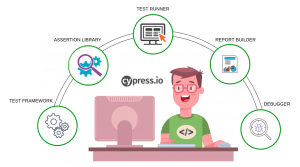SAP is at a turning point. As the clock ticks toward SAP’s 2027 deadline to sunset mainstream support for ECC, businesses around the world are facing a critical decision point: stay tethered to legacy systems or embrace the future with SAP S/4HANA and the broader intelligent enterprise framework.
2025, in particular, is shaping up to be a landmark year—where long-term technology strategies will be put into motion, and the choices made could determine competitive advantage for years to come.
The shift isn’t just about upgrading software; it’s about transforming how businesses operate at their core. From real-time data insights and embedded AI to hyper-personalised industry solutions and integrated ESG metrics, SAP’s evolving ecosystem is redefining what’s possible in enterprise resource planning. For many, this isn’t just a tech migration—it’s a business reinvention.
At Code4Nord, we’ve got our eyes on the road ahead. As a trusted SAP development partner, we’re tracking the latest advancements in S/4HANA migrations, AI-native capabilities within the SAP Business Technology Platform (BTP), and the rise of modular, industry-specific cloud solutions. We’re also helping our clients leverage these tools to modernise processes, unlock operational agility, and build the foundations of the intelligent enterprise.
The Three Paths to S/4HANA
There’s no one-size-fits-all roadmap to S/4HANA. Companies are exploring three primary paths—greenfield, brownfield, and hybrid—each with distinct trade-offs in terms of cost, speed, disruption, and innovation.
- Greenfield (new implementation): This approach involves starting from scratch, redesigning processes, and leveraging the full capabilities of S/4HANA from day one. It’s ideal for businesses looking to break free from legacy constraints, eliminate technical debt, and adopt a modern digital core. While greenfield offers maximum flexibility and the chance to rethink end-to-end operations, it can also be more resource-intensive and time-consuming.
- Brownfield (system conversion): For organisations that want a quicker, less disruptive transition, brownfield provides a lift-and-shift migration of ECC systems to S/4HANA. Existing configurations, master data, and historical information are retained, reducing implementation time and cost. However, this approach can also carry forward legacy inefficiencies if not managed carefully.
- Hybrid (selective transformation): Increasingly, businesses are opting for a hybrid model that blends the best of both worlds. This strategy allows for selective reengineering—modernising high-impact processes while preserving stable or less critical components. In complex, multinational environments where full greenfield isn’t feasible, hybrid deployments strike a balance between innovation and continuity.
In 2025, we anticipate a marked increase in hybrid transformations, particularly in enterprises managing diverse operations across regions, subsidiaries, or verticals. These organisations are seeking agility without sacrificing the control and compliance offered by existing systems.
How SAP is Making Artificial Intelligence Native
Artificial intelligence in SAP is no longer a bolt-on innovation—it’s now a fundamental design principle. In 2025, we’re witnessing a major shift: AI is being natively embedded across SAP’s core offerings, from S/4HANA and SAP Business Technology Platform (BTP) to industry-specific applications and extensions. What was once considered experimental or future-facing has become a baseline expectation.
At the heart of this evolution is SAP’s AI-first architecture, which empowers enterprises to make real-time decisions, predict outcomes, and automate actions—seamlessly and at scale.
S/4HANA’s in-built AI features are redefining what’s possible in ERP. For example:
- In finance, AI automates invoice matching, flagging anomalies, reducing manual workloads, and accelerating month-end close.
- In supply chain and manufacturing, predictive maintenance algorithms anticipate equipment failure before it happens, minimising downtime and boosting asset uptime.
- In procurement, intelligent spend analysis surfaces insights into supplier risk and helps optimise purchasing decisions.
These AI capabilities aren’t standalone—they’re embedded into the workflows employees already use. That’s the power of native intelligence: it improves productivity without disrupting familiar processes.
SAP BTP – The Innovation Engine Behind Custom AI and Automation
Beyond S/4HANA, SAP BTP (Business Technology Platform) serves as the innovation engine. It allows organisations to extend and customise SAP applications while tapping into advanced AI services, including machine learning, natural language processing, computer vision, and generative AI.
With BTP, companies can:
- Build custom AI models using enterprise data in SAP DataSphere.
- Deploy chatbots and virtual assistants with SAP Conversational AI for improved customer service and internal support.
- Leverage generative AI for intelligent document processing—extracting insights from invoices, contracts, and forms faster than ever before.
SAP’s recently introduced Joule, an AI copilot built directly into the SAP ecosystem, takes this even further by enabling users to interact with systems through natural language—accelerating decision-making, surfacing insights, and simplifying complex tasks.
The Business Case for AI in 2025
According to SAP, over 70% of new innovations for S/4HANA in 2025 will include AI. That’s a clear message: the future of ERP is intelligent, adaptive, and automated. Businesses that delay AI adoption risk missing out on critical advantages—faster processes, smarter forecasting, and a more responsive enterprise.
We’re already seeing early adopters outpace competitors through:
- 30–50% reduction in manual effort across financial, procurement, and HR operations.
- Higher data accuracy and fewer compliance breaches due to AI-driven validation.
- Greater agility in responding to customer needs and market shifts, thanks to predictive insights.
At Code4Nord, we help companies move from AI aspiration to real-world application. Whether it’s implementing embedded intelligence in S/4HANA, building custom AI models on BTP, or integrating third-party AI services via APIs, we ensure each solution is aligned with your strategic goals.
Our focus is on usable innovation—solutions that make life easier for your teams today while laying the groundwork for the intelligent enterprise of tomorrow.
Sustainability Is a Core Focus for SAP in 2025
In 2025, SAP is doubling down on ESG as a cornerstone of enterprise performance. With regulatory frameworks like the Corporate Sustainability Reporting Directive (CSRD) gaining traction, and stakeholders demanding more transparency around environmental and social impact, businesses are under mounting pressure to move beyond sustainability reports and embed ESG into their everyday operations.
SAP’s approach makes sustainability actionable. Solutions like the SAP Sustainability Control Tower and SAP Product Footprint Management are purpose-built to help enterprises operationalise ESG commitments and drive measurable outcomes.
With these tools, businesses can:
- Track carbon emissions and environmental impact in detail—covering Scope 1, 2, and more frequently now, Scope 3—to get a clear view of product and operational footprints.
- Build ESG KPIs straight into day-to-day planning and performance tracking, so you can see exactly where you stand against sustainability goals in real time.
- Stay ahead of regulations like CSRD and IFRS Sustainability Disclosure Standards by making compliance part of how your business runs—not an afterthought.
This goes beyond compliance. It’s also gives a competitive advantage. By treating sustainability as a strategic lever, companies can improve supply chain transparency, reduce waste, optimise energy usage, and respond to customer demand for greener products.
SAP’s intelligent enterprise framework positions sustainability as a value driver. It’s integrated, measurable, and scalable, giving leaders the insights they need to act decisively and responsibly.
Looking Beyond 2025
What’s next for SAP? We’re watching developments in quantum computing, edge AI, and process mining with keen interest. SAP’s focus on clean core, composability, and AI-first architecture signals a future where customisation won’t come at the cost of complexity.
At Code4Nord, we combine technical expertise with strategic insight to help businesses get the most from their SAP investments—today and tomorrow.
Is your organisation ready for the next chapter of SAP? Let’s explore how we can build your intelligent enterprise—together. Get in touch today!


